If you or a loved one experiences shoulder pain, you know it can be difficult to get some quality shut-eye, but it’s not impossible. In this article, I’ll discuss how shoulder pain and its causes impact sleep. Along the way, I’ll share tips from medical experts on how you can improve your sleep while experiencing shoulder pain.
Note: The content on Sleepopolis is meant to be informative in nature, but it shouldn’t take the place of medical advice and supervision from your healthcare provider. If you feel you may be suffering from any sleep disorder or medical condition, please see a trained medical professional.
How Shoulder Pain Affects Sleep
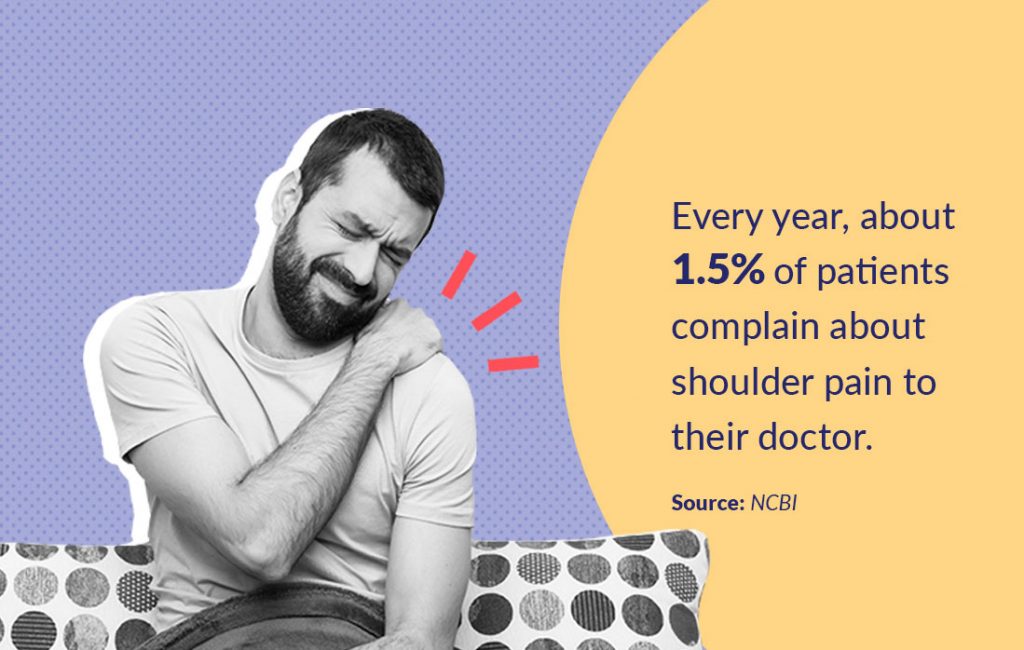
Every year, about 1.5% of patients complain about shoulder pain to their doctor. (1) Due to this discomfort, most of these folks aren’t getting the quality sleep they need. (2)
To make matters worse, shoulder pain can often stick around, rather than disappearing within a few weeks. (3) In fact, 41% of people with shoulder pain still experience pain after a year of suffering. (4)
Dr. Gbolahan Okubadejo (AKA Dr. Bo), a spinal and orthopedic surgeon at the Institute for Comprehensive Spine Care, notes that the eight muscles within the shoulder provide flexibility and a wide range of motion. On the flip side, this mobility increases the likelihood of developing pain in the shoulders.
According to Dr. Norris S. Golberg, a licensed chiropractor at Koru Chiropractic Corrective Care, repositioning at night can irritate your shoulder pain, and awaken you in the process — making it difficult to fall asleep again. As Dr. Bo explains further, sleeping in the wrong position isn’t actually the most common cause for this pain. He says, “The most common causes usually don’t point to severe underlying diseases. Instead, shoulder pain frequently has to do with the overuse of the joints, tendinitis, a torn rotator cuff, bone spurs, pinched nerves, or arthritis.”

That doesn’t mean, however, that your sleep position can exacerbate your shoulder pain. Dr. Goldberg says that those who are side sleepers, could be making their shoulder pain worse. Dr. Bo says folks with shoulder pain tend to toss and turn at night due to tenderness, stiffness, and inflammation. He says side sleepers in particular have trouble falling asleep, since this position can painfully compress the shoulder.
The pain, movement restrictions, and problems created in daily life could potentially lead to depression in those with shoulder pain. (5) And this can make it harder to achieve a good night’s sleep. (6) Let’s check out some ways you can reduce shoulder pain, so you’re less likely to be depressed and you’re more likely to sleep better.
Tips for Better Sleep With Shoulder Pain
Shoulder pain doesn’t mean you’re destined to go without quality sleep. There are ways to mitigate shoulder pain so you can sleep better.
Sleep on the pain-free side
First up: sleep on the side that doesn’t hurt. Dr. Bo advises placing a large pillow behind your back to keep from rolling to the painful side at night. This won’t prevent you from rolling completely, especially if you tend to toss and turn, but it should help you to stay put. And make sure you’re sleeping on the right mattress for you, since some mattresses are better than others at alleviating shoulder pain. Check out our roundup of the best mattresses for shoulder pain.
Stretch
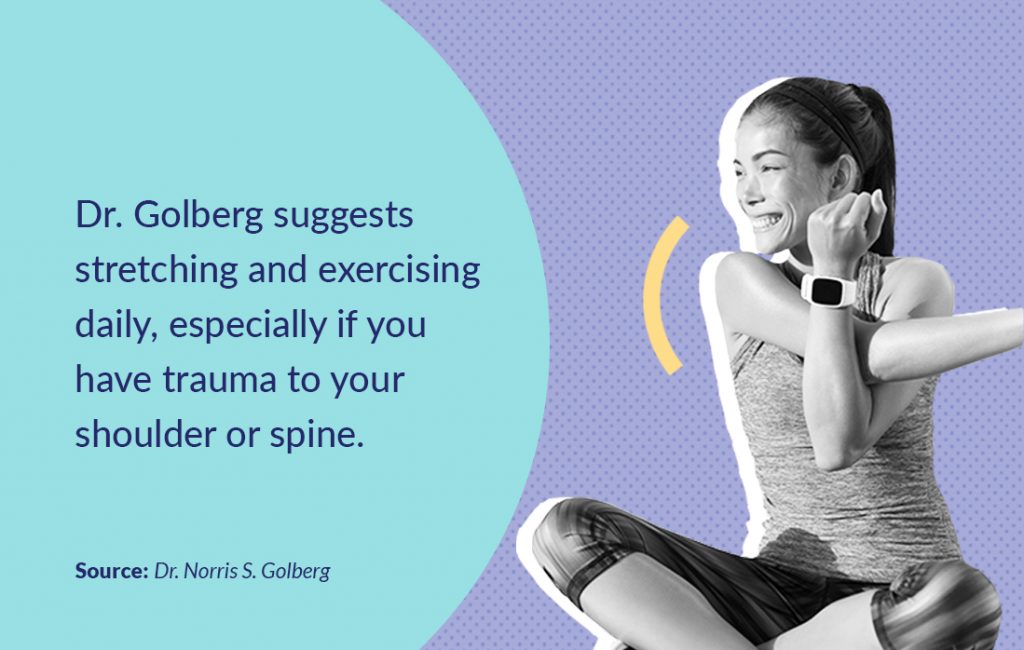
Take a break to stretch! Dr. Bo also recommends stretching before bedtime to loosen your shoulder muscles.
If you want to try stretching your shoulder muscles, Harvard Medical School provides some steps:
- Sit straight in a chair and put your left hand on your right shoulder.
- Use your right hand to cup your left elbow.
- Roll your shoulders down and back, before pulling your left elbow across your chest while extending your left arm.
- Hold this position for 10-30 seconds.
- Return to the starting position and do it again on the opposite side. (7)
Dr. Golberg suggests stretching and exercising daily, especially if you have trauma to your shoulder or spine. He states that those who are active and stretch regularly can see a decrease in pain.
Talk with your doctor
Your doctor should be able to provide some tips on how you can reduce your pain. Dr. Bo recommends speaking to an orthopedist. Treatments such as prescription medications, ointments, and injections may help cut back on the pain. (8) You can also consult a massage therapist to see if that treatment is right for you. (9)
For more severe cases, surgery may be necessary to relieve shoulder pain, though this isn’t common. (10)
Use proper posture
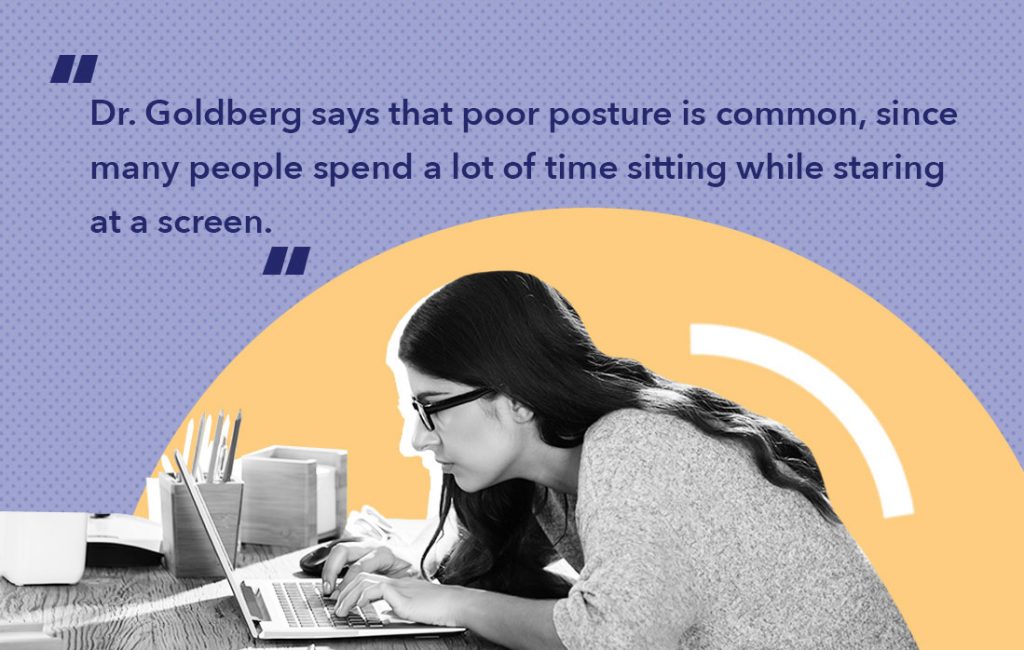
Dr. Goldberg says that poor posture is common, since many people spend a lot of time sitting, especially those who work at a computer all day. If this sounds like you, be sure to keep your posture in mind when sitting for long periods of time.
Use ice packs or heat
Ice packs can relieve shoulder inflammation, so it may be wise to keep a couple in the freezer at home. You can try using ice packs for 20 to 40 minutes at a time, every two hours. If the ice just isn’t doing the trick, try using a heating pad. (11)
Causes of Shoulder Pain
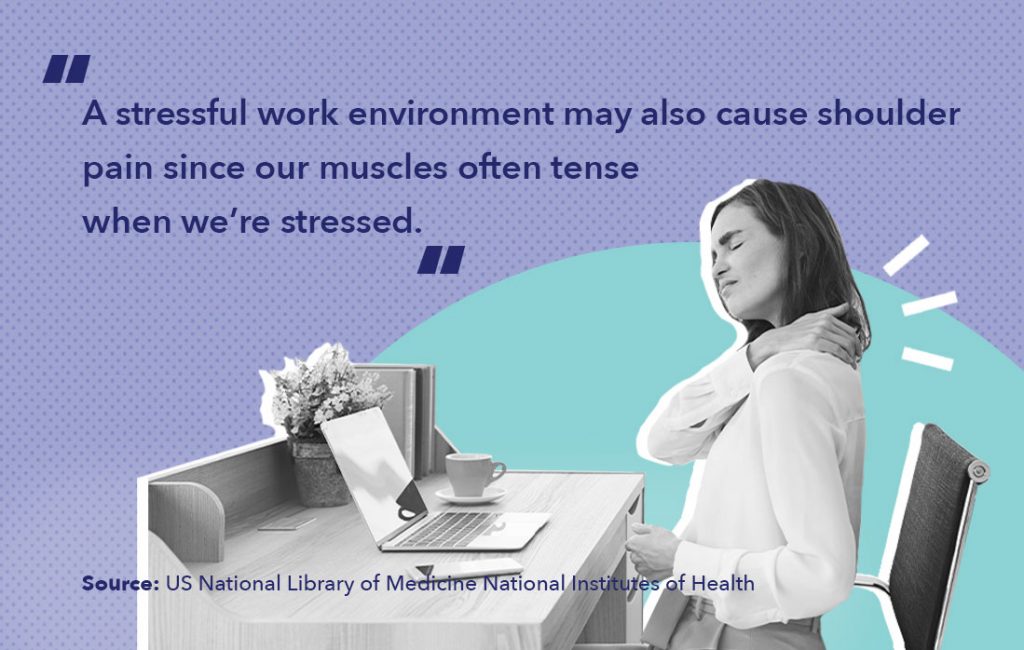
Though jobs that require heavy lifting, working in awkward positions, or repetitive shoulder movements may cause shoulder pain, it isn’t confined to just physically demanding jobs. Office workers can be at risk, too.
For instance, a stressful work environment may also cause shoulder pain, since our muscles often tense up when we’re stressed. (12) Coincidentally, that very shoulder pain can put you at a risk for even higher levels of stress. Dr. Golberg blames repetitive movements as a main cause of shoulder pain. In addition, he says there’s a link between shoulder pain and poor neck posture, so keep your chin up! He also notes a connection to Upper Crossed Syndrome, which is when certain muscles in your neck and shoulder are tight, and others are weak. (13)
Trauma can also result in shoulder pain, such as a dislocation or partial dislocation. Dr. Golberg says that such cases tend to be chronic and require surgery.
Your neck could also be causing your shoulder pain. Dr. Goldberg says the nerves that come out of your neck go down to your shoulders. As he explains, “If there is compression or irritation of these nerves it can cause the pain to radiate into the shoulder.” Finally, he notes that this can happen with the muscles that attach to the neck and shoulder blades, since discomfort in these muscles can affect all the muscles in the shoulder.
Last Word From Sleepopolis
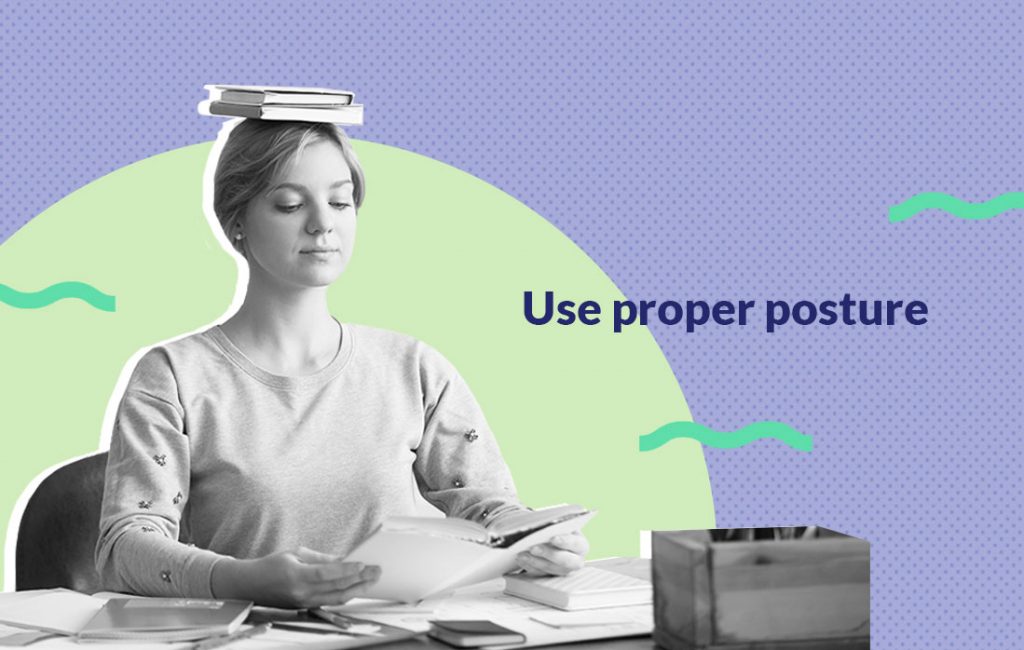
Shoulder pain isn’t great for sleep, but that doesn’t mean you can’t get quality rest if you experience it. Keep in mind that some ways to get a better night’s sleep include stretching before bedtime, practicing proper posture, and using ice packs. Please remember that we are not medical experts, so be sure to speak with your healthcare provider if you have any medical questions.
References
- Cadogan, A et al. A prospective study of shoulder pain in primary care: Prevalence of imaged pathology and response to guided diagnostic blocks. BMC Musculoskeletal Disorders. May 28, 2011.
- Longo, U et al. Sleep Disturbance and Rotator Cuff Tears: A Systematic Review. Medicina. Aug 2019.
- Engebretsen, K et al. Predictors of Shoulder Pain and Disability Index (SPADI) and work status after 1 year in patients with subacromial shoulder pain. BMC Musculoskeletal Disorders. Sep 23, 2010.
- Lowe, C et al. Living with a symptomatic rotator cuff tear ‘bad days, bad nights’: a qualitative study. BMC Musculoskeletal Disorders. Jul 9, 2014.
- Tekeoglu, I et al. The relationship between shoulder impingement syndrome and sleep quality. European Review for Medical and Pharmacological Sciences. Feb 2013.
- Reyes, B et al. Do Magnetic Resonance Imaging Characteristics of Full-Thickness Rotator Cuff Tears Correlate With Sleep Disturbance? Orthopaedic Journal of Sports Medicine. Nov 1, 2017.
- Ouch! Shoulder pain and how to treat it. Harvard Medical School. Apr 13, 2020. https://www.health.harvard.edu/pain/ouch-shoulder-pain-and-how-to-treat-it
- Jones, S et al. A qualitative study of patients’ perceptions and priorities when living with primary frozen shoulder. BMJ Open. Sep 26, 2013.
- “Massage.” US Department of Veterans Affairs. https://www.va.gov/WHOLEHEALTHLIBRARY/tools/massage.asp
- “Shoulder pain.” Victoria State Government Department of Health. https://www.betterhealth.vic.gov.au/health/conditionsandtreatments/Shoulder-pain
- Greenberg, D. Evaluation and Treatment of Shoulder Pain. Medical Clinics of North America. May 2014.
- Linaker, C et al. Shoulder Disorders and Occupation. Best Practice & Research: Clinical Rheumatology. Jun 2015.
- Bertelsman, T. “Upper Crossed Syndrome.” https://ilchiro.org/upper-crossed-syndrome/



























